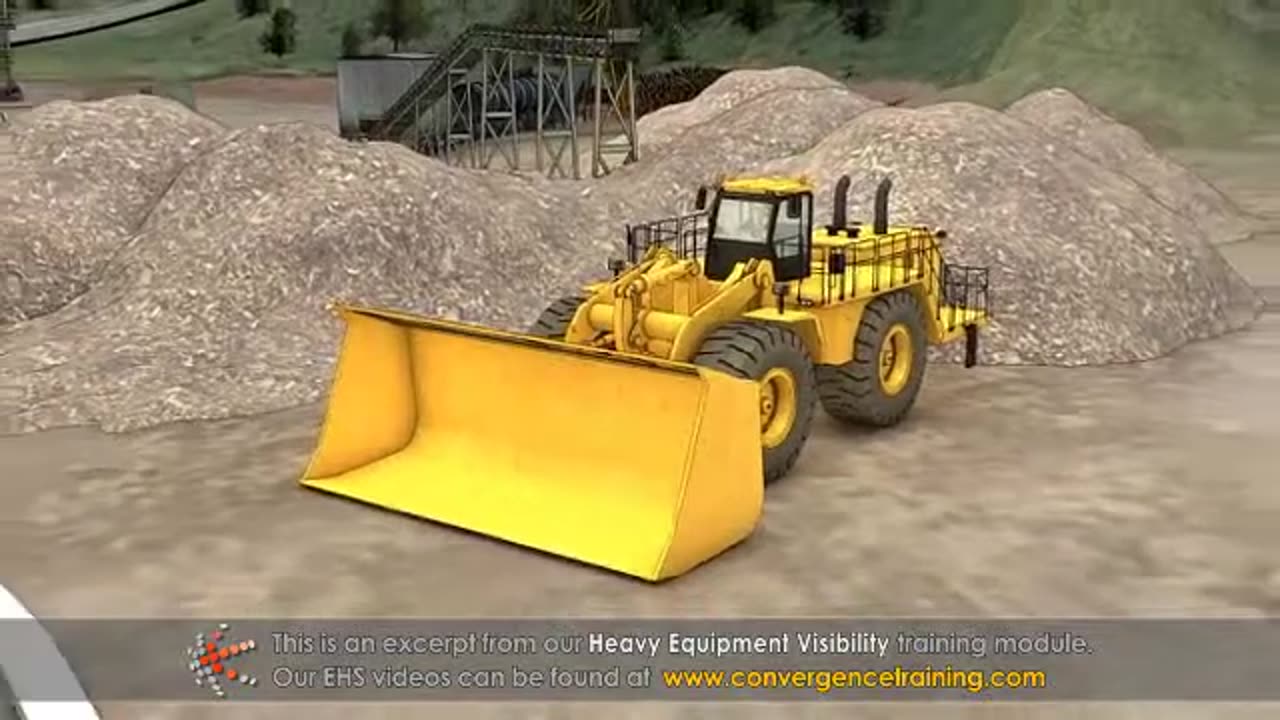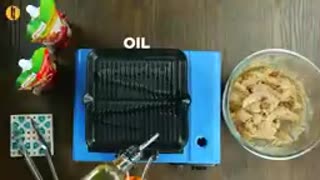Premium Only Content

Heavy Equipment Visibility Training
**Heavy Equipment Visibility Training** focuses on educating operators, ground personnel, and supervisors about the importance of visibility when operating heavy machinery. Lack of visibility is one of the leading causes of accidents on worksites, especially when operating large equipment like excavators, bulldozers, cranes, and loaders. Ensuring that all personnel are visible and aware of their surroundings can significantly reduce the risk of collisions, accidents, and injuries.
### Key Elements of Heavy Equipment Visibility Training
#### 1. **Introduction to Visibility Hazards**
- **Common Visibility Issues:** Understanding the main visibility challenges that arise when operating heavy equipment, such as:
- **Blind Spots:** Areas around the equipment where the operator cannot see directly or through mirrors or cameras (e.g., rear, sides, or directly beneath the vehicle).
- **Obstructed Views:** Tall structures, materials, or other equipment that may block the operator’s line of sight.
- **Weather Conditions:** How rain, fog, snow, or low light conditions can reduce visibility and create additional hazards.
- **Nighttime Operations:** The challenges of operating equipment in low light or at night, where the operator may have limited visibility and rely heavily on equipment lights and reflective markings.
#### 2. **Types of Visibility Aids**
- **Mirrors and Cameras:**
- **Side, Rearview, and Blind Spot Mirrors:** Proper use and adjustment of mirrors to minimize blind spots and improve operator visibility.
- **Cameras and Sensors:** Modern heavy equipment is often equipped with cameras, proximity sensors, and backup alarms to enhance visibility and alert operators to nearby objects or workers.
- **Wide-angle Mirrors:** Used to provide a broader view of the surrounding area.
- **Lighting:**
- **Work Lights:** Proper positioning and use of work lights to illuminate the immediate area around the equipment during nighttime or low-light conditions.
- **Warning Lights:** The use of strobe or flashing lights to signal to others that the equipment is operating or moving, especially in areas with high foot traffic.
- **Reflective Markings:** Ensuring equipment has reflective tape or decals to improve visibility for both operators and others around the equipment, especially in low light or at night.
- **Spotters and Ground Personnel:**
- The use of spotters to help guide equipment operators, especially when visibility is limited, or when working in confined spaces.
- Clear communication with ground personnel, who should be positioned where they can be easily seen by the operator, and vice versa.
#### 3. **Best Practices for Maximizing Visibility**
- **Positioning of Equipment:**
- Operators should be trained to position the equipment in a way that maximizes visibility before starting a task. This includes checking the surroundings for obstacles, ensuring that there are no workers or vehicles in blind spots, and positioning the vehicle to avoid blocking visibility of hazards.
- **Pre-Operational Checks:**
- Conducting thorough inspections to ensure that mirrors, cameras, lights, and other visibility aids are functioning correctly before operating the equipment.
- **Operator Awareness:**
- Emphasizing the importance of constant awareness of the environment, even when using visibility aids. Operators should remain vigilant and avoid relying solely on mirrors and cameras.
- **Safe Maneuvering:**
- Operators should use slow, controlled movements, especially when reversing or turning in areas with limited visibility, and should use caution in congested or unfamiliar work areas.
#### 4. **Training Operators to Identify and Mitigate Blind Spots**
- **Blind Spot Awareness:** Training operators on the typical blind spots of specific equipment and how to adjust their positioning, mirrors, and use of spotters to reduce these areas.
- **Using Technology to Aid Visibility:** Emphasizing the use of advanced technologies, such as:
- **360-degree Cameras:** Allowing operators to have a full view around the equipment.
- **Proximity Sensors and Collision Avoidance Systems:** These systems alert the operator when a person, object, or other equipment is in a blind spot or too close to the equipment.
- **Monitoring and Adjusting for Blind Spots:** Encouraging operators to frequently check their surroundings, particularly when maneuvering the equipment in tight spaces or near people.
#### 5. **Communication and Coordination with Ground Personnel**
- **Clear Communication:** Training both operators and ground personnel on how to effectively communicate using hand signals, radios, or other systems. Clear communication helps prevent accidents when visibility is limited.
- **Safety Zones:** Establishing safety zones around the equipment where ground personnel are not allowed unless they are actively assisting the operator, and ensuring that the equipment operator can always see these zones.
- **Spotter Training:** Educating ground personnel on how to guide operators safely when visibility is compromised, including how to use hand signals and maintain safe distances.
#### 6. **Night and Low Light Operations**
- **Lighting Systems:** Proper use and adjustment of the machine’s lighting systems, including headlights, taillights, and additional work lights, to ensure that the area around the equipment is adequately illuminated.
- **Reflective Gear for Personnel:** Ensuring that workers wear high-visibility clothing with reflective tape to make them more visible to operators at night or in low-light conditions.
- **Navigating Low-Light Areas:** Emphasizing the importance of slowing down when operating in poorly lit or dark areas to ensure there is enough time to react to any potential hazards.
#### 7. **Weather-Related Visibility Issues**
- **Handling Reduced Visibility in Adverse Weather:** Training operators to adjust their driving and working habits when dealing with fog, snow, rain, or other weather conditions that reduce visibility.
- **Use of De-Icing and Defrosting Systems:** Ensuring that equipment is equipped with systems to clear snow, ice, or condensation from mirrors, windows, and lights before operation.
- **Adjusting Speed and Movements:** Operators should be trained to reduce speed, take extra caution when moving, and avoid sudden movements when visibility is poor due to weather conditions.
#### 8. **Technology-Enhanced Safety Features**
- **Automatic Emergency Braking Systems:** These systems help prevent collisions by automatically applying the brakes if a potential hazard is detected within the machine’s path.
- **360-Degree Visibility Systems:** Some machines are equipped with advanced technology that allows the operator to see a complete view of their surroundings via screens inside the cab.
- **Telematics and GPS Tracking:** Monitoring the equipment’s location and status can provide additional insights into potential hazards on the worksite and improve overall safety.
#### 9. **Case Studies and Real-Life Examples**
- **Accident Reports:** Reviewing case studies of accidents that occurred due to poor visibility, analyzing the causes, and discussing preventive measures to avoid similar incidents.
- **Lessons Learned:** Discussing how companies or sites improved their safety by implementing visibility-enhancing measures or equipment.
#### 10. **Emergency Procedures for Low Visibility Situations**
- **When to Stop Work:** Operators should be trained to halt operations if visibility becomes so poor that it compromises safety, such as during extreme weather conditions or night shifts without adequate lighting.
- **Reporting Visibility Issues:** Training workers to report visibility-related hazards, such as broken lights or obstructed mirrors, so they can be addressed before they lead to accidents.
### Benefits of Heavy Equipment Visibility Training
- **Reduced Accidents and Injuries:** Proper visibility aids and training reduce the chances of accidents caused by unseen obstacles, workers, or equipment.
- **Improved Productivity:** Operators can work more efficiently and confidently when they have full visibility of their environment.
- **Enhanced Worker Safety:** Ground personnel are protected when proper safety measures are in place, and they are trained to communicate effectively with operators.
- **Compliance with Regulations:** Ensuring that equipment operators meet OSHA and industry standards for equipment visibility and safety, reducing legal risks.
### Training Methods
- **Classroom Training:** Teaching theoretical knowledge about visibility hazards, visibility aids, and the importance of safety awareness.
- **Hands-on Training:** Allowing operators to use the equipment and practice using mirrors, cameras, and spotters to enhance visibility on the job.
- **Simulations:** Using virtual or real-world simulations to train operators in dealing with various visibility challenges, including night-time operations, poor weather conditions, and blind spot management.
- **On-the-Job Training:** Supervisors provide guidance on-site as operators practice safe equipment operation with an emphasis on visibility.
Would you like help developing a **Heavy Equipment Visibility Training** program specific to your workplace or job site needs?
-
 1:35
1:35
HSESafetyInformation
1 month agoMutton Chops two ways- baked & grilled Recipe by Food Fusion (Eid Recipe)
59 -
 2:50:22
2:50:22
TimcastIRL
12 hours agoTrump Hits China With 125% Tariff, Pauses Others, Sees LARGEST Market Rally IN HISTORY | Timcast IRL
369K247 -
 1:43:15
1:43:15
Glenn Greenwald
15 hours agoTrump's Tariffs: A Threat to the Neoliberal Order? With Journalist David Sirota; Biden CBP Fabricated Doc to Help Imprison Bolsonaro Adviser? Plus: Israel Support Collapsing | SYSTEM UPDATE #436
212K126 -
 15:04
15:04
T-SPLY
17 hours agoMSNBC Accuses Trump Of "Snatching" Illegal Immigrants For Political Show
98.3K48 -
 2:01:37
2:01:37
Melonie Mac
16 hours agoGo Boom Live Ep 44!
139K42 -
 3:23:19
3:23:19
SikeSzns
3 hours agoForza Horizon 5
9.56K1 -
 2:56:40
2:56:40
BigDaddySlick78's Live Gaming Channel
4 hours ago🔴 Call Of Duty Warzone Rebirth Island & Area 99 Live w/ Subs #callofduty #warzone #bo6 #cod
14.6K -
 49:41
49:41
BonginoReport
15 hours agoKristi Noem Honors Angel Mom After Son's Brutal Murder - Nightly Scroll w/Hayley Caronia (Ep.23)
168K80 -
 45:22
45:22
Stephen Gardner
13 hours ago🔥WTF! Dan Bongino’s CRYPTIC ARREST message!
143K134 -
 1:30:16
1:30:16
2 MIKES LIVE
15 hours ago2 MIKES LIVE #203 Lone Survivor with Donna Axelson and Adam Flynn!
89.3K